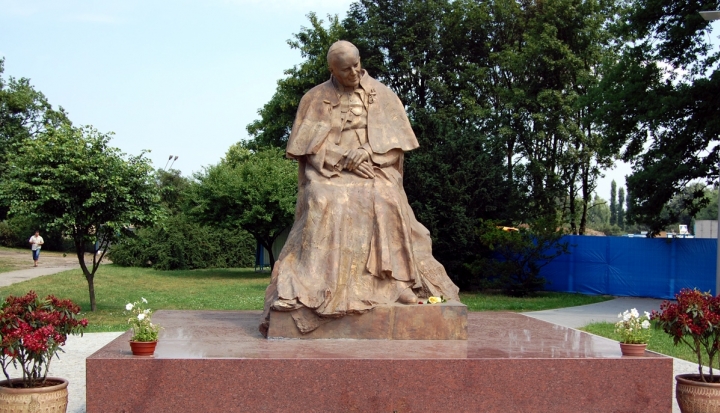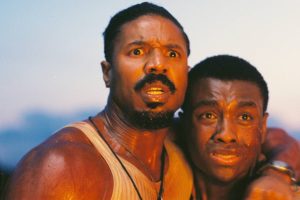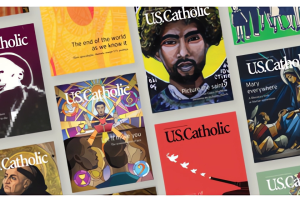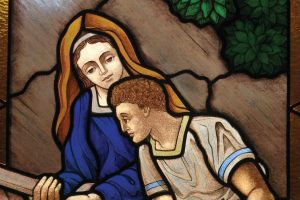c. 2014 Religion News Service
(RNS) One was a man who shook the very foundations of the Roman Catholic Church by ushering in revolutionary reforms through the Second Vatican Council of the 1960s. The other was a charismatic globe-trotter who stared down communism and taught the world lasting lessons of how to die.
On Sunday (April 27), Pope Francis will canonize two predecessors, John XXIII and John Paul II, elevating the two most influential popes of the 20th century to the pantheon of Catholic life and worship.
Though the canonizations are not without controversy, few would question the long-term impact of John (who reigned from 1958-1963) and John Paul (who reigned from 1978-2005). Religion News Service asked experts, biographers and theologians to assess the two men. Some responses have been edited for length and clarity:
John Paul II
Communism: The former Karol Wojtyla knew all too well the burdens of living under communism in his native Poland. As pope, he worked alongside Ronald Reagan and Margaret Thatcher to rally the world against repressive regimes and watched as the Soviet empire unraveled across Eastern Europe.
“John Paul II was the pivotal figure in communism’s European demise. Communism would have eventually collapsed of its own implausibility. But if you ask why it collapsed when it did (1989, not 1999, 2009, 2019, whenever) and how it did (largely without mass violence), you have to give full marks to the revolution of conscience ignited by John Paul II in his nine-day visit to Poland in June 1979. That revolution of conscience was one of the chief dynamics that led, over 10 difficult years, to the revolution of 1989 in central and Eastern Europe.”
– George Weigel, distinguished senior fellow at the Ethics and Public Policy Center and author of Witness to Hope: The Biography of Pope John Paul II
Culture of Life: John Paul was a tireless crusader against abortion, euthanasia, capital punishment and later, embryonic stem cell research. His papacy mirrored the rise of the modern anti-abortion movement, and his prolonged public struggle with Parkinson’s disease captivated the world’s attention on the end of life.
“Because of John Paul II, the sacredness of the human person and centrality of the human person became a very strong new evangelization theme throughout the world. The centrality of sacredness of human life brought about changes in a number of lives and cultures, including the fall of Soviet communism. He reminds us that the culture is the most important thing in the formation of individuals and society itself. He reminded us that the conflict is a spiritual and a moral one between culture of death and the lives each of us live.
“One of the most important examples he gave is the way in which he died, in how he taught us how to die. There were people who were saying ‘he’s too old’ or ‘he should retire.’ But he showed us that there’s no such thing as a life not worth living. There’s dignity in living and dying in the world. He gave us a living encyclical in which his life ended and passed into eternal life.”
– The Rev. William F. Maestri, a priest at St. Louis Cathedral in New Orleans and former director of communications for the Archdiocese of New Orleans
Jews and Judaism: In 1986, John Paul became the first pope to make an official visit to a synagogue, in Rome. In 2000, he traveled to Israel, where he prayed at the sacred Western Wall. He referred to Jews as our “elder brethren” in faith and repeatedly condemned anti-Semitism.
“When he was elected to the papacy in 1978, Karol Wojtyla brought with him a unique set of experiences for a Catholic prelate: He had many childhood Jewish friends but had also known the grief of losing most of them during the Nazis’ occupation of his native Poland.
“One of his first acts as John Paul II was to declare that the Catholic Church should be committed to friendship and dialogue with the Jewish people. By numerous writings and addresses, by visits with many Jewish communities, and most iconically by his prayer at Jerusalem’s Western Wall in 2000, John Paul became the implementer and definer of the new relationship with Jews made possible by the Second Vatican Council.”
– Philip A. Cunningham, professor of theology and director of the Institute for Jewish-Catholic Relations at St. Joseph’s University in Philadelphia
Clergy sexual abuse: The sexual abuse scandal that rocked the Catholic Church in the U.S. in 2002 occurred on John Paul’s watch, and the problem was not confined to North America. He was a patron of the disgraced founder of the Legion of Christ order, the Rev. Marcial Maciel, and critics accuse of him of turning a blind eye to the abuse of minors in the Catholic Church.
“Canonizing John Paul II sends precisely the most harmful signal to Catholic employees across the globe—that no matter how much you endanger kids, you’ll be honored by and in the church. It rubs even more salt into the still-fresh and already-deep wounds of millions of betrayed Catholics and thousands of suffering victims.
“Under John Paul, the U.S. bishops’ grudging, belated and weak abuse policy was delayed and further weakened, allowing predators to remain in ministry and offering no consequences to those that enabled and shielded them. Honoring John Paul and ignoring his wrongdoing encourages more wrongdoing.
“Honoring those who refuse to protect kids and heed warnings about abuse sends a message to those in a position of authority. The message could not be more irresponsible.”
– David Clohessy, national director of the Survivors Network of those Abused by Priests
Youth: The aged pontiff claimed rock-star status among Catholic youth, particularly at the massive World Youth Day festivals he inaugurated, and he inspired an entire generation of like-minded “John Paul II” priests.
“John Paul’s impact on Catholic youth was tremendous—incalculable, really. His name surfaces in countless stories of young adult conversions, vocations to the priesthood and religious life, decisions to launch new ministries or to fully embrace Catholic teaching on sex and marriage.
“His World Youth Days lit a fire for evangelization among the young. His authentic and joyful personal witness made the gospel message come alive again for millions. John Paul showed young people—even, and perhaps especially, in the suffering of his final days—how to live those words of Christ that he repeated so often: ‘Be not afraid.’ John Paul was not afraid to live totally for Christ. And his courage made young people want to do the same.”
– Colleen Carroll Campbell is the author of My Sisters the Saints and The New Faithful. Campbell is also executive producer and anchor of EWTN News Nightly with Colleen Carroll Campbell and was a speechwriter for former President George W. Bush.
John XXIII
The “People of God”: Prior to the Second Vatican Council convened by John XXIII in 1962, the Roman Catholic Church was a hierarchical monarchy where the rules for the faithful were pay, pray and obey. Vatican II reoriented the church’s view of itself as “the people of God.”
“Vatican II gave us the Idea that there are not different levels of holiness. We’re all called to the same level of holiness, to justice and to be God’s children, which was a huge change from this rather privileged hierarchy class of clergy and religion. That’s something that we all share in Jesus’ command to love each other and to serve each other. It was the insight of John 23 that made that possible.
“Since the Council, we’ve seen a change in the amount of leadership there is within the church, the development of parish councils, diocesan councils, the role of educated laity studying theology and teaching theology and living it in our very complex world. It expanded the idea of religion being in the church building to faith being lived in the streets.”
– Sister Simone Campbell is executive director of NETWORK, A National Catholic Social Justice Lobby. She lives in Washington, where she lobbies on health care, immigration reform, and economic justice.
Ecumenism: Before 1965, Catholics were not even allowed to step foot in a Protestant church, and Jews were widely blamed for the death of Jesus. But John’s Second Vatican Council recast the Catholic Church’s relations with non-Catholics, other faiths and even its own understanding as the one true church.
“Pope John was the first, at such a high level, to understand the true scope of the ecumenical path, that is the full communion of the church. He is at the base of this irreversibile movement of the church that needs to be continued and deepened today—to fully participate in ecumenism.
“Since the Second Vatican Council, we have seen the fruits of the ecumenical journey. The most notable has been the rediscovery of Christian brotherhood. It is not an emotional or sentimental thing, but based on a unique common baptism and the same faith in Jesus Christ. This is the solid base that (enables) Christians from different churches and denominations to consider themselves brothers and sisters.”
– Stefania Falasca, Italian journalist and essayist and author of John XXIII: A Revolution Came with a Caress.
Jews and Judaism: In the wake of the Holocaust that left 6 million Jews dead, John XXIII’s Second Vatican Council reconsidered the Catholic Church’s approach to Judaism, saying in 1965 that Jesus’ death “cannot be charged against all the Jews, without distinction, then alive, nor against the Jews of today. Although the Church is the new people of God, the Jews should not be presented as rejected or accursed by God.”
“John XXIII’s historic achievements signified the beginning of the end of anti-Judaism and anti-Semitism within the Catholic Church.The new pope was especially committed to permanently changing the often negative and toxic relationship between Catholics and Jews.
“The Vatican Council opened in October 1962 and for the next three years more than 2,000 bishops met periodically to define a new constructive relationship with both Judaism and the Jewish people. It was an enormous task, but the pope urged the bishops to transform Catholic teaching, preaching, liturgy and beliefs about Jews and Judaism. During the Holocaust, he wrote: ‘We are dealing with one of the great mysteries in the history of humanity. Poor children of Israel. Daily I hear their groans around me. They are relatives and fellow countrymen of Jesus.’”
– Rabbi A. James Rudin is a columnist for Religion News Service and is former chairman of the International Jewish Committee for Interreligious Consultations. He has written several books on Catholic-Jewish relations.
Liturgy: When John convened Vatican II he thought it was time to open the windows and let in a little fresh air. The change that affected Catholics most directly involved the liturgy, where Latin was tossed for the local vernacular, the priest turned to face the congregation and Gregorian chant was replaced by modern music.
“If it were not for John XXIII, we would not have had the liturgical reforms of Vatican II. By calling the Second Vatican Council, and placing the discussion of liturgy first on its agenda, he signaled the pastoral nature of the council and approved the urgent task of liturgical reform. John XXIII never lived to see completion of this labor, but I can imagine him smiling on its fruit today: the full, conscious and active participation of the faithful in the mysteries we celebrate. The fresh air he wanted to let into the Catholic Church, as well as the ecumenical spirit he wished to foster among all Christians, lives on most especially in the liturgical reforms of Vatican II.”
– Rita Ferrone, author of several books about liturgy who works as a liturgical consultant. She received an award from the Catholic Press Association for her commentary titled “Liturgy: Sacrosanctum Concilium,” which focused on the liturgical reforms of Vatican II.
Humor: John XXIII was once asked how many people work in the Vatican. “About half,” he replied. He was known as “the good pope” and “Good Pope John” and was beloved in ways that resemble the adoration currently showered on Pope Francis.
“Who couldn’t love a pope who had a sense of humor? Who couldn’t feel affection for a man who was so comfortable with himself that he constantly made jokes about his height (which was short), his ears (which were big) and his weight (which was considerable). When he once met a little boy named Angelo, he exclaimed, ‘That’s my name too!’ And then, conspiratorially, ‘But then they made me change it.’ For his humor, his openness, his generosity and his warmth, many people loved him: Good Pope John.”
– The Rev. James Martin is a Jesuit priest and editor at large of America magazine. He is the author of My Life With the Saints, which includes a chapter on John XXIII’s humor.
Image: Wikimedia Commons cc by Karolchelm Chełm Polska












Add comment